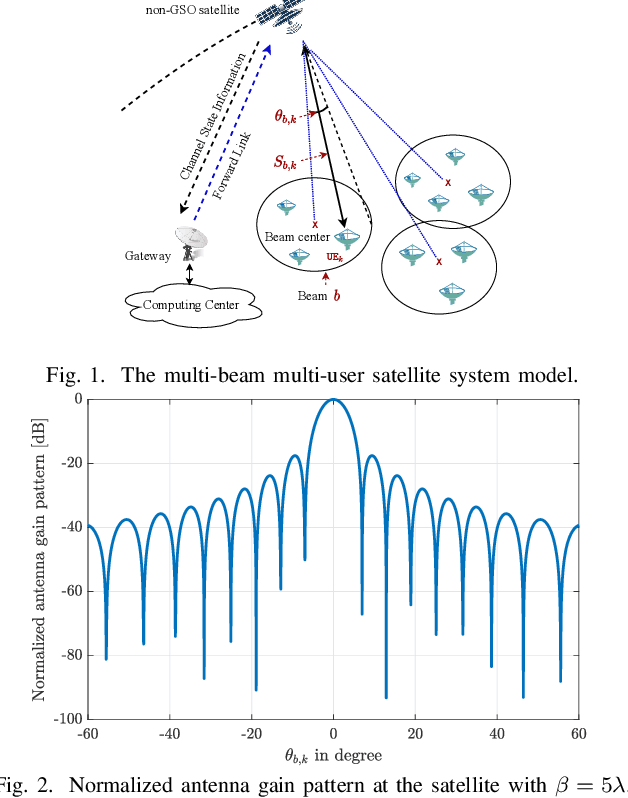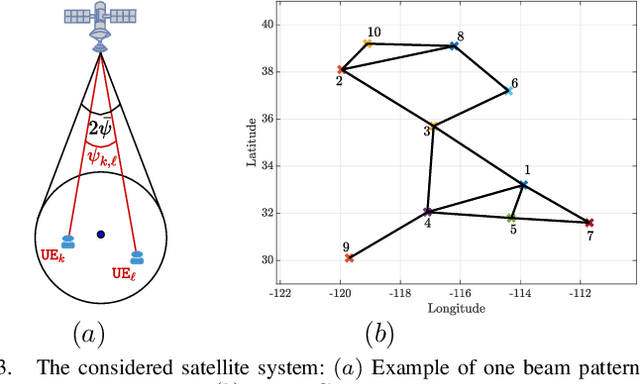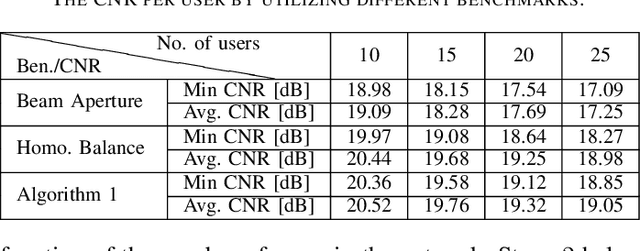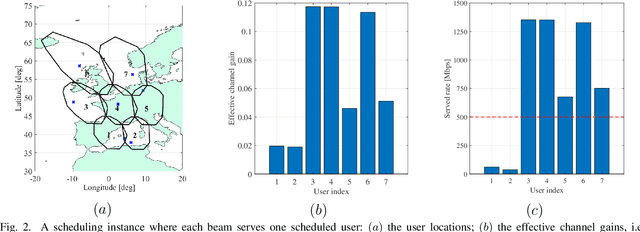Joël Grotz
Joint Beam Placement and Load Balancing Optimization for Non-Geostationary Satellite Systems
Jul 29, 2022



Abstract:Non-geostationary (Non-GSO) satellite constellations have emerged as a promising solution to enable ubiquitous high-speed low-latency broadband services by generating multiple spot-beams placed on the ground according to the user locations. However, there is an inherent trade-off between the number of active beams and the complexity of generating a large number of beams. This paper formulates and solves a joint beam placement and load balancing problem to carefully optimize the satellite beam and enhance the link budgets with a minimal number of active beams. We propose a two-stage algorithm design to overcome the combinatorial structure of the considered optimization problem providing a solution in polynomial time. The first stage minimizes the number of active beams, while the second stage performs a load balancing to distribute users in the coverage area of the active beams. Numerical results confirm the benefits of the proposed methodology both in carrier-to-noise ratio and multiplexed users per beam over other benchmarks.
Robust Congestion Control for Demand-Based Optimization in Precoded Multi-Beam High Throughput Satellite Communications
Sep 06, 2021



Abstract:High-throughput satellite communications systems are growing in strategic importance thanks to their role in delivering broadband services to mobile platforms and residences and/or businesses in rural and remote regions globally. Although precoding has emerged as a prominent technique to meet ever-increasing user demands, there is a lack of studies dealing with congestion control. This paper enhances the performance of multi-beam high throughput geostationary (GEO) satellite systems under congestion, where the users' quality of service (QoS) demands cannot be fully satisfied with limited resources. In particular, we propose congestion control strategies, relying on simple power control schemes. We formulate a multi-objective optimization framework balancing the system sum-rate and the number of users satisfying their QoS requirements. Next, we propose two novel approaches that effectively handle the proposed multi-objective optimization problem. The former is a model-based approach that relies on the weighted sum method to enrich the number of satisfied users by solving a series of the sum-rate optimization problems in an iterative manner. Meanwhile, the latter is a data-driven approach that offers a low-cost solution by utilizing supervised learning and exploiting the optimization structures as continuous mappings. The proposed general framework is evaluated for different linear precoding techniques, for which the low computational complexity algorithms are designed. Numerical results manifest that our proposed framework effectively handles the congestion issue and brings superior improvements of rate satisfaction to many users than previous works. Furthermore, the proposed algorithms show low run-time, which make them realistic for practical systems.
 Add to Chrome
Add to Chrome Add to Firefox
Add to Firefox Add to Edge
Add to Edge